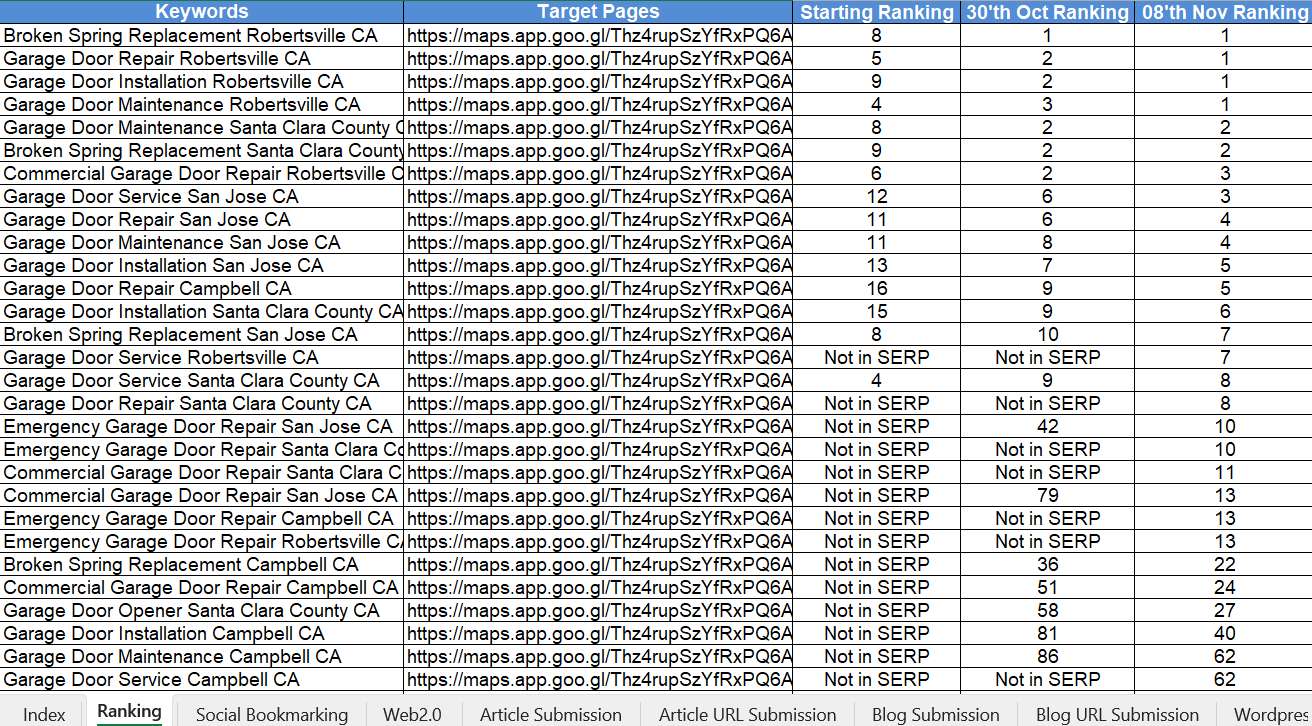How to Attract More Customers to Your Shed Business
How to Attract More Customers to Your Shed Business
Unlocking the potential of your shed business with effective marketing strategies
In the competitive landscape of the shed business, attracting a steady stream of customers is essential for sustained growth and profitability. Whether you're manufacturing sheds, selling them, or offering installation services, implementing effective marketing strategies can significantly enhance your visibility and drive sales. This comprehensive guide explores various tactics and best practices to help you attract more customers to your shed business.
Understanding Your Market
Before diving into marketing strategies, it's essential to have a clear understanding of your market. This involves identifying your target audience, analyzing your competitors, and understanding the demand for shed-related products and services in your area.
Identifying Your Target Audience
Determine who your ideal customers are. Consider factors such as age, income level, location, and specific needs. For instance, are your sheds primarily for residential use, commercial purposes, or specialized functions like workshops and storage?
Analyzing Competitors
Research your competitors to understand their strengths and weaknesses. Identify what they offer, their pricing strategies, and how they market their products. This analysis can help you identify gaps in the market and opportunities to differentiate your business.
Understanding Market Demand
Assess the demand for sheds in your target area. Use tools like Google Trends, industry reports, and local surveys to gauge interest and identify emerging trends. Understanding market demand will help you tailor your offerings and marketing efforts accordingly.
Building a Strong Online Presence
In today's digital age, having a robust online presence is crucial for attracting customers to your shed business. This involves having a well-designed website, optimizing it for search engines, and ensuring it provides valuable information to potential customers.
Website Optimization
Your website is often the first point of contact with potential customers. Ensure it is professional, user-friendly, and mobile-responsive.
- Professional Design: Invest in a clean, modern design that reflects the quality of your sheds. Use high-quality images and clear navigation to enhance user experience.
- Mobile Responsiveness: Ensure your website is optimized for mobile devices. A significant portion of users browse on smartphones and tablets, and a mobile-friendly site can improve user engagement and search rankings.
- Fast Loading Speed: Optimize your website's loading speed by compressing images, minimizing code, and using reliable hosting. Faster websites provide better user experiences and rank higher in search results.
- Clear Call-to-Actions (CTAs): Use prominent CTAs to guide visitors toward desired actions, such as requesting a quote, scheduling a consultation, or making a purchase.
Search Engine Optimization (SEO)
SEO is the process of optimizing your website to rank higher in search engine results, making it easier for potential customers to find you online.
- Keyword Research: Identify relevant keywords that your target audience is likely to use when searching for shed-related products and services. Use tools like Google Keyword Planner, Ahrefs, or SEMrush to find high-traffic keywords with manageable competition.
- On-Page SEO: Incorporate your target keywords naturally into your website's content, including titles, headings, meta descriptions, and body text. Ensure each page focuses on a specific topic or keyword to improve relevancy.
- Technical SEO: Optimize your website's technical aspects, such as site structure, URL hierarchy, XML sitemaps, and robots.txt files. Ensure search engines can crawl and index your site efficiently.
- Content Creation: Regularly publish high-quality, informative content related to sheds. Blog posts, how-to guides, and case studies can attract organic traffic and establish your authority in the industry.
- Link Building: Acquire backlinks from reputable websites to improve your site's authority and search rankings. Focus on creating valuable content that others naturally want to link to.
Leveraging Social Media
Social media platforms offer powerful tools for promoting your shed business, engaging with customers, and building brand loyalty. By strategically utilizing social media, you can reach a broader audience and drive more traffic to your website.
Choosing the Right Platforms
Not all social media platforms are equally effective for every business. Choose the platforms that best align with your target audience and business objectives.
- Facebook: Ideal for building a community, sharing updates, and running targeted ads. Facebook's diverse user base makes it suitable for reaching various demographics.
- Instagram: Perfect for visually showcasing your sheds through high-quality images and videos. Use Instagram Stories and Reels to engage with younger audiences.
- Pinterest: Great for sharing design ideas, inspiration boards, and DIY projects related to sheds. Pinterest users often seek solutions and inspiration, making it a valuable platform for your business.
- YouTube: Utilize YouTube for video marketing, such as product demonstrations, installation guides, and customer testimonials. Videos can enhance your brand's credibility and provide valuable information to potential customers.
- LinkedIn: Suitable for B2B marketing if you cater to commercial clients. Share industry insights, company updates, and professional achievements to build your business network.
Creating Engaging Content
Content is the heart of your social media strategy. Creating engaging and relevant content helps attract and retain your audience, fostering a strong online community.
- High-Quality Images: Share professional photos of your sheds, showcasing different models, designs, and features. High-quality visuals can capture attention and highlight the craftsmanship of your products.
- Video Content: Create videos that demonstrate the benefits of your sheds, installation processes, and customer testimonials. Videos are highly engaging and can convey information more effectively than text or images alone.
- Educational Posts: Share tips on shed maintenance, design ideas, and the benefits of owning a shed. Educational content provides value to your audience and positions your brand as an authority in the industry.
- User-Generated Content: Encourage customers to share photos and stories of their sheds. Featuring user-generated content builds trust and fosters a sense of community around your brand.
- Interactive Content: Use polls, quizzes, and Q&A sessions to engage with your audience. Interactive content encourages participation and increases user engagement.
Paid Social Media Advertising
While organic reach is valuable, paid advertising on social media can significantly amplify your marketing efforts, targeting specific audiences and driving immediate results.
- Targeted Ads: Utilize the advanced targeting options available on platforms like Facebook and Instagram to reach your ideal customers based on demographics, interests, behaviors, and location.
- Retargeting Campaigns: Implement retargeting strategies to reach users who have previously visited your website or engaged with your social media profiles. Retargeting keeps your brand top-of-mind and encourages conversions.
- Ad Formats: Experiment with different ad formats such as carousel ads, video ads, and slideshow ads to determine which formats resonate best with your audience.
- Budget Management: Allocate your advertising budget effectively by monitoring ad performance and adjusting spend based on ROI. Focus on high-performing ads to maximize your marketing budget.
Utilizing Local Marketing
Local marketing strategies help your shed business connect with customers in your immediate area. By focusing on local engagement, you can build a strong community presence and attract nearby customers.
Google My Business
Google My Business (GMB) is a powerful tool for local SEO, allowing your shed business to appear in local search results and Google Maps.
- Claim and Verify Your Listing: Ensure your GMB listing is claimed and verified. This allows you to manage the information displayed and respond to customer reviews.
- Optimize Your Profile: Fill out all relevant fields, including business name, address, phone number, website, hours of operation, and categories. Add high-quality photos to make your listing more appealing.
- Encourage Reviews: Positive reviews enhance your GMB ranking and build trust with potential customers. Encourage satisfied customers to leave reviews and respond to them promptly.
- Post Regular Updates: Use Google Posts to share updates, promotions, events, and news directly on your GMB listing. Regular updates keep your profile active and engaging.
Local Citations and Directories
Local citations are mentions of your business's Name, Address, and Phone number (NAP) on other websites. Consistent citations across reputable directories can boost your local SEO rankings.
- Consistent NAP: Ensure your business's NAP information is consistent across all online directories, social media profiles, and your website.
- List on Relevant Directories: Submit your business to popular local directories such as Yelp, Yellow Pages, Angie’s List, and local chamber of commerce websites.
- Industry-Specific Listings: Register on industry-specific directories related to home improvement, construction, and outdoor living to reach a targeted audience.
- Monitor Citations: Regularly audit your citations to ensure accuracy and address any discrepancies that may arise.
Community Engagement
Engaging with your local community fosters strong relationships and enhances your brand's reputation. Active community involvement can lead to increased word-of-mouth referrals and customer loyalty.
- Sponsor Local Events: Sponsor community events, sports teams, or charity initiatives to increase your brand's visibility and demonstrate your commitment to the community.
- Host Workshops and Seminars: Organize workshops on shed maintenance, DIY projects, or home improvement to provide value to your community and position your business as an expert.
- Participate in Local Fairs and Markets: Set up booths at local fairs and markets to showcase your sheds, interact with potential customers, and generate leads.
- Partner with Local Businesses: Collaborate with complementary businesses such as landscaping companies, home builders, or interior designers to cross-promote services and expand your reach.
Email Marketing
Email marketing remains one of the most effective ways to nurture relationships with your customers and drive repeat business. By sending targeted and personalized emails, you can keep your audience engaged and informed about your shed business.
Building an Email List
Start by collecting email addresses from your website visitors, customers, and event attendees. Offer incentives such as discounts, free guides, or exclusive content to encourage sign-ups.
- Newsletter Sign-Ups: Include sign-up forms on your website, especially on high-traffic pages like the homepage, blog, and product pages.
- In-Store Promotions: Collect emails during in-store visits by offering instant discounts or entry into a prize draw for subscribing to your newsletter.
- Lead Magnets: Provide valuable resources such as eBooks, checklists, or design templates in exchange for email addresses.
Creating Effective Campaigns
Design email campaigns that provide value to your subscribers and encourage them to take action. Segment your email list based on customer behavior and preferences to deliver personalized content.
- Promotional Emails: Announce sales, discounts, and special offers to drive immediate purchases.
- Educational Content: Share tips on shed maintenance, design ideas, and benefits of different shed types to inform and engage your audience.
- Customer Stories: Feature customer testimonials and case studies to build trust and showcase your sheds' real-world applications.
- Automated Campaigns: Set up automated email sequences for new subscribers, abandoned carts, and post-purchase follow-ups to nurture leads and encourage repeat business.
Content Marketing
Content marketing is a strategic approach focused on creating and distributing valuable, relevant, and consistent content to attract and retain a clearly defined audience. For shed businesses, content marketing can help establish authority, drive traffic, and convert leads into customers.
Blogging
Maintaining an active blog on your website allows you to share valuable information, showcase your expertise, and improve your SEO rankings. Regularly publishing high-quality blog posts can attract organic traffic and engage your audience.
- Educational Articles: Write about topics such as "Choosing the Right Shed for Your Backyard," "Shed Maintenance Tips," and "Design Ideas for Your New Shed."
- How-To Guides: Provide step-by-step instructions on shed installation, DIY projects, and customization options.
- Case Studies: Share success stories of customers who have benefited from your sheds, highlighting their unique needs and how your products met them.
- Industry News: Keep your audience informed about the latest trends, materials, and innovations in the shed industry.
Video Marketing
Videos are highly engaging and can effectively convey information about your sheds in a dynamic and visually appealing way. Incorporate video marketing into your strategy to showcase your products and connect with your audience.
- Product Demonstrations: Create videos that demonstrate the features, benefits, and installation processes of your sheds.
- Customer Testimonials: Feature satisfied customers sharing their positive experiences with your sheds, building trust and credibility.
- Virtual Tours: Offer virtual tours of your showroom or shed facilities to give potential customers an inside look at your offerings.
- Educational Videos: Produce content that educates your audience on topics like shed design, maintenance, and customization options.
Customer Reviews and Testimonials
Customer reviews and testimonials play a crucial role in building trust and credibility for your shed business. Positive feedback from satisfied customers can influence potential buyers' decisions and enhance your online reputation.
Encouraging Customer Reviews
Actively seek reviews from your customers to build a robust portfolio of testimonials. Here are some effective ways to encourage reviews:
- Follow-Up Emails: Send thank-you emails after a purchase or installation, requesting customers to leave a review on platforms like Google, Yelp, or your website.
- Incentivize Reviews: Offer small incentives such as discounts on future purchases or entry into a prize draw for customers who leave reviews.
- Simplify the Process: Provide direct links to your review pages in your communications to make it easy for customers to leave feedback.
- In-Store Prompts: Use signage or provide printed instructions in your showroom or store to remind customers to leave reviews.
Showcasing Testimonials
Feature customer testimonials prominently on your website and social media channels to highlight positive experiences and build trust with potential customers.
- Dedicated Testimonial Page: Create a separate page on your website for customer testimonials and case studies.
- Social Media Sharing: Share testimonials and reviews on your social media profiles to reach a wider audience.
- Video Testimonials: Use video testimonials to provide a more personal and authentic touch.
- Highlight Reviews in Marketing Materials: Incorporate positive reviews into your brochures, flyers, and other marketing collateral.
Strategic Partnerships
Collaborating with other businesses can expand your reach, provide mutual benefits, and attract more customers to your shed business. Strategic partnerships can enhance your marketing efforts and introduce your products to new audiences.
Partnering with Home Improvement Businesses
Form partnerships with home improvement stores, landscaping companies, and interior designers to cross-promote services and products. These partnerships can lead to referrals and joint marketing initiatives.
- Referral Programs: Establish a referral program where partners earn commissions for referring customers to your shed business.
- Joint Promotions: Collaborate on joint promotions or bundled offers that provide added value to customers.
- Co-Hosting Events: Host joint workshops or seminars on home improvement topics, showcasing how sheds can complement other projects.
Collaborating with Real Estate Agents
Real estate agents often work with clients looking to enhance their properties. Partnering with them can provide a steady stream of potential customers seeking additional storage or outdoor space solutions.
- Exclusive Offers: Offer exclusive discounts or packages to clients referred by real estate agents.
- Educational Materials: Provide real estate agents with brochures or informational materials about your sheds to share with their clients.
- Joint Marketing Efforts: Collaborate on marketing campaigns that highlight the benefits of adding sheds to newly purchased homes.
Engaging with Local Contractors and Builders
Local contractors and builders can be valuable partners, especially if they are involved in constructing or renovating homes. Building relationships with these professionals can lead to referrals and collaborative projects.
- Networking Events: Attend local industry events and trade shows to connect with contractors and builders.
- Joint Projects: Collaborate on projects where your sheds can be incorporated into larger construction or renovation efforts.
- Mutual Referrals: Establish a referral system where you refer clients to each other based on complementary needs.
Tracking and Analyzing Performance
Measuring the effectiveness of your marketing strategies is essential to understand what works and what needs improvement. By tracking key performance indicators (KPIs) and utilizing analytics tools, you can make informed decisions to optimize your marketing efforts.
Key Performance Indicators (KPIs)
Identify and monitor KPIs that align with your business goals. Common KPIs for a shed business include:
- Website Traffic: Measure the number of visitors to your website to assess overall interest and reach.
- Conversion Rate: Track the percentage of website visitors who take desired actions, such as making a purchase or requesting a quote.
- Customer Acquisition Cost (CAC): Calculate the cost of acquiring a new customer through your marketing efforts.
- Return on Investment (ROI): Evaluate the profitability of your marketing campaigns by comparing the revenue generated to the costs incurred.
- Social Media Engagement: Monitor likes, shares, comments, and followers to gauge the effectiveness of your social media strategies.
- Lead Generation: Track the number of leads generated through various marketing channels, such as email campaigns, social media, and SEO.
- Customer Retention Rate: Measure how many customers return for additional purchases or services, indicating satisfaction and loyalty.
Analytics Tools
Utilize analytics tools to gain deeper insights into your marketing performance. Here are some essential tools to consider:
- Google Analytics: Provides comprehensive data on website traffic, user behavior, and conversion tracking. Use it to identify which marketing channels are driving the most traffic and conversions.
- Google Search Console: Helps monitor and maintain your website's presence in Google search results. Use it to track keyword performance, identify crawl errors, and submit sitemaps.
- Social Media Analytics: Platforms like Facebook, Instagram, and Pinterest offer built-in analytics tools to track engagement, reach, and ad performance.
- Email Marketing Analytics: Tools like Mailchimp or Constant Contact provide insights into open rates, click-through rates, and conversion rates for your email campaigns.
- CRM Systems: Customer Relationship Management (CRM) systems like HubSpot or Salesforce can help track leads, customer interactions, and sales performance.
Adjusting Strategies Based on Data
Use the data collected from your analytics tools to refine and optimize your marketing strategies. Here’s how:
- Identify High-Performing Channels: Allocate more resources to marketing channels that are driving the most traffic and conversions.
- Optimize Underperforming Areas: Analyze why certain strategies aren’t working and make necessary adjustments. This could involve tweaking ad creatives, targeting different demographics, or changing your content approach.
- A/B Testing: Experiment with different versions of your marketing materials, such as email subject lines, ad creatives, and landing pages, to determine what resonates best with your audience.
- Set Realistic Goals: Based on your performance data, set achievable goals for future marketing campaigns and continuously strive to improve.
- Continuous Learning: Stay updated with the latest marketing trends and algorithm changes to ensure your strategies remain effective.
Conclusion
Attracting more customers to your shed business requires a multifaceted approach that combines understanding your market, building a strong online presence, leveraging social media, utilizing local marketing, engaging in content and email marketing, showcasing customer testimonials, forming strategic partnerships, and continuously tracking and optimizing your performance.
By implementing the strategies outlined in this guide, you can enhance your marketing efforts, increase your visibility, and drive more sales for your shed business. Remember, consistency and adaptability are key to staying ahead in the competitive shed market. Continuously evaluate your strategies, embrace new marketing trends, and focus on delivering exceptional value to your customers to achieve long-term success.
Frequently Asked Questions (Q&A)
1. What are the most effective marketing strategies for a shed business?
Effective marketing strategies for a shed business include optimizing your website for SEO, leveraging social media platforms, utilizing local advertising, offering promotions and discounts, and building strong customer relationships through excellent service and engagement.
2. How can SEO help my shed business attract more customers?
SEO helps your shed business increase its online visibility, making it easier for potential customers to find you through search engines. By optimizing your website with relevant keywords, creating quality content, and building backlinks, you can improve your search rankings and attract more organic traffic.
3. Which social media platforms are best for promoting a shed business?
Platforms like Facebook, Instagram, Pinterest, and YouTube are highly effective for promoting a shed business. Facebook and Instagram are great for visual content and ads, Pinterest is ideal for sharing design ideas and inspiration, and YouTube can be used for video marketing such as product demonstrations and customer testimonials.
4. How can I create engaging content for my shed business on social media?
Create a mix of high-quality images, videos, customer testimonials, sleep tips, and behind-the-scenes content. Use storytelling to highlight the benefits and features of your sheds, and encourage user-generated content to boost engagement.
5. What role do customer reviews and testimonials play in attracting customers to my shed business?
Customer reviews and testimonials build trust and credibility for your shed business. Sharing positive feedback on social media can influence potential buyers' decisions and enhance your brand reputation.
6. How can I use paid advertising on social media to boost shed sales?
Utilize targeted ads on platforms like Facebook and Instagram to reach specific demographics. Use retargeting strategies to re-engage visitors who have shown interest in your products, and create compelling ad creatives that highlight your sheds' unique features.
7. How important is a professional website for my shed business?
A professional website is crucial as it serves as the online face of your shed business. It provides potential customers with information about your products, services, and contact details. A well-designed, user-friendly, and mobile-responsive website can significantly enhance your credibility and attract more customers.
8. What are local citations and how do they benefit my shed business?
Local citations are mentions of your business's Name, Address, and Phone number (NAP) on other websites. Consistent citations across reputable directories can boost your local SEO rankings, making it easier for local customers to find your shed business online.
9. How can email marketing help my shed business?
Email marketing allows you to directly reach out to your customers with personalized offers, promotions, and updates. It helps in nurturing customer relationships, encouraging repeat business, and driving sales through targeted campaigns.
10. What are some cost-effective marketing strategies for a shed business?
Cost-effective marketing strategies include leveraging social media platforms, optimizing your website for SEO, utilizing email marketing, encouraging customer referrals, and creating valuable content through blogs and videos. Additionally, participating in local events and forming strategic partnerships can provide high returns on minimal investment.
25 Extra Keywords for Your Digital Marketing Agency Website
- Digital marketing strategies
- SEO services
- Social media management
- PPC advertising
- Content creation
- Brand development
- Online marketing solutions
- Email marketing campaigns
- Website design and development
- Conversion rate optimization
- Influencer marketing
- Video marketing services
- Local SEO optimization
- Mobile marketing
- E-commerce marketing
- Analytics and reporting
- Marketing automation
- Reputation management
- Graphic design services
- Digital advertising agency
- Search engine marketing
- Lead generation strategies
- Marketing consultation
- Retargeting campaigns
- Comprehensive marketing plans
How to Attract More Customers to Your Shed Business Read More »






Social Media Ads
Platforms like Facebook and Instagram offer robust advertising options that allow you to target specific demographics and interests relevant to your mattress store.